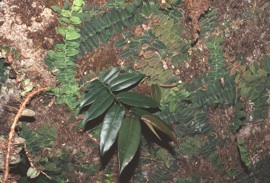Teaching

Photo of Fridtjof Nansen, developed in a Pelargonium leaf using photosynthesis. (BI1004 lab exercise)

Lettuce seed germination responses to light and hormones. (BI1004 student data)

Pressure-volume curve used to estimate water relations parameters. (BO2021 lab exercise)
BI1004: Physiology
I teach the plant physiology part of this course during the first half of the autumn semester. As part of the biology department’s core curriculum, required for all biology majors, the major goal of the lecture course is to provide a strong foundation of knowledge in plant structure and function that can inform future studies in all biological disciplines. In the lab course students get hands-on experience in working with plants, and develop skills in data analysis, presentation, and report writing that can be applied in any scientific discipline. Topics include anatomy, photosynthesis, water relations, internal transport, nutrition, growth and development, responses to the environment, defense, and stress. In 2006 I received the Natural Science and Technology Faculty’s Teaching Award for my teaching in this course.
BO2021: Ecophysiology
This course employs active discussion of reading assignments in a textbook and journal articles and lab exercises to study how plants interact with their environments. Topics include photosynthetic responses to light and carbon dioxide, water relations and hydraulic architecture, nutrient uptake and assimilation, growth and morphogenetic responses to the environment, defense and plant-insect interactions, and stress tolerance. Offered in the autumn semester every other year, next time in 2010.
BO2022 Plant Growth and Development
This course emphasizes critical reading and evaluation of journal articles, supported by more general textbook coverage, to explore topics in molecular, cellular, and whole-plant regulation of growth and development. Students analyze and present a journal article to the class, and write a review article on a topic of their own choosing. Themes include embryogenesis, mechanisms of cell wall expansion and cell growth, photomorphogenesis, hormone growth responses and signal transduction, and flowering. Offered in the autumn semester every other year, next time in 2011.
BI3020 Advanced Physiology
Master’s students in plant physiology can take this course to explore specific topics, based on reading and discussion of research and review articles selected by the instructor and student.

The juvenile-adult transition in the tropical liana Marcgravia, an example of a morphogenetic response. (R. Strimbeck photo)